Residents in the Southwest who are fortunate enough to have Texas ranger (
Leucophyllum frutescens)
growing in their gardens are familiar with the eager anticipation of the year’s first flush of purple that covers this attractive yet tough shrub. Sometimes referred to as “barometer bush,” it often flowers in response to watering or increased humidity in summer and early fall.
Even when not in flower, these shrubs are an asset to the landscape with their attractive gray-green foliage. When you consider its beauty and ability to thrive in hot, dry climates while easily handling areas that receive hot, reflected sun, it is easy to see why Texas ranger is such a popular choice for Southwestern gardens.
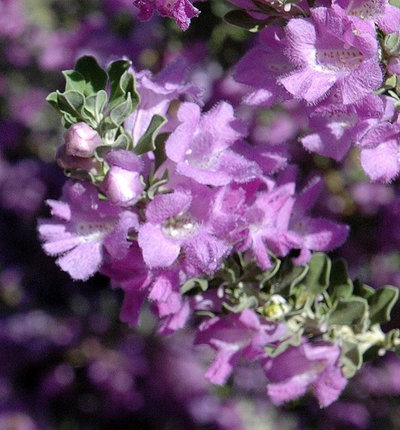
Noelle Johnson Landscape Consulting
Botanical name: Leucophyllum frutescens Common names: Texas ranger, Texas sage, Cenizo
Origin: Native to the Chihuahuan Desert and northern Mexico
Where it will grow: Hardy to 10 degrees Fahrenheit (USDA zone 8; find your zone)
Water requirement: Moderately drought tolerant once established, but looks best when watered deeply once a week in the summer and twice a month in spring and fall; water once a month in winter
Light requirement: Full sun to light shade
Mature size: 5 to 8 feet tall and wide
Benefits and tolerances: Drought tolerant; provides shelter for native bird species and attracts certain butterfly and moth species
Seasonal interest: Flowers off and on in summer and early fall, often in response to humidity and rainfall
When to plant: Fall or spring
Shown: Flowering Texas ranger (
Leucophyllum frutescens)
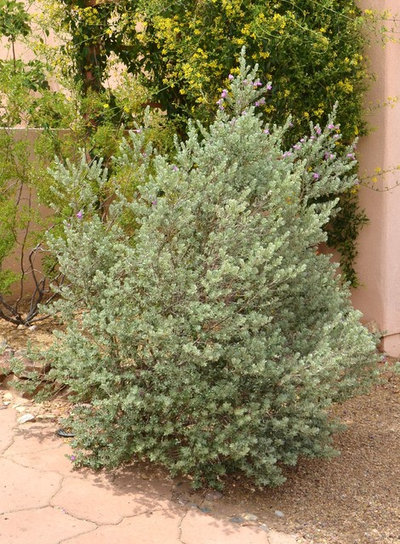
Noelle Johnson Landscape Consulting
Distinguishing traits. The true beauty of this desert shrub lies in its beautiful purple flowers. With the approach of summer and increased humidity, it is sporadically covered in masses of purple flowers.
The leaves of Texas ranger shrubs have a grayish cast due to the tiny hairs that cover them, which help to limit water loss from their leaves while also reflecting the sun’s rays. You can also see small hairs covering the flowers, which serve the same purpose.
While this shrub is evergreen throughout the year in zones 8 and above, some of the foliage may yellow and fall to the ground in winter, which is normal.
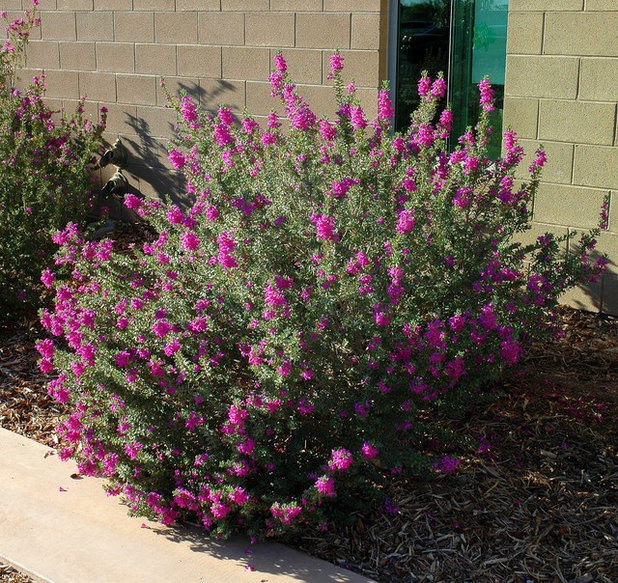
Noelle Johnson Landscape Consulting
The most popular form of Texas ranger is a variety called ‘Green Cloud’, which was introduced by Texas A&M University and has darker green leaves and deeper purple blooms than regular Texas ranger shrubs.
Shown: ‘Green Cloud’ Texas ranger (
Leucophyllum frutescens ‘Green Cloud’)
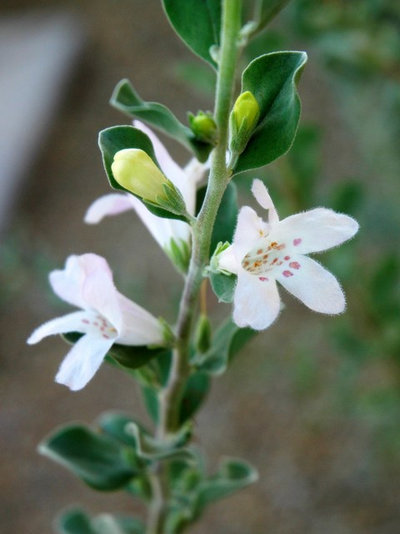
Noelle Johnson Landscape Consulting
Other varieties of Texas ranger often found planted throughout Southwestern gardens include the smaller variety called ‘Compacta’, as well as ‘White Cloud’, which has white flowers instead of purple.
Shown: The flowers of White Cloud Texas ranger (
Leucophyllum frutescens ‘White Cloud’)
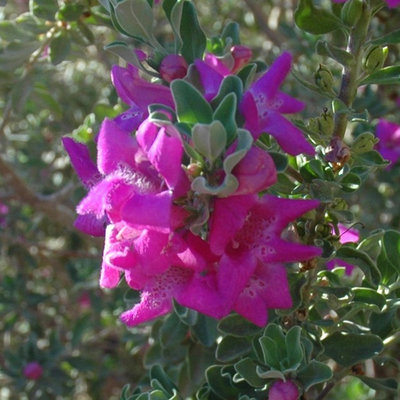
Noelle Johnson Landscape Consulting
Texas ranger shrubs benefit wildlife in a variety of ways. They provide nesting sites for native bird species as well as provide protection and cover for ground-dwelling birds such as Gambel’s quail. They also attract adult butterflies and are larval plants for certain butterfly and moth species.
Shown: ‘Green Cloud’ Texas sage flowers
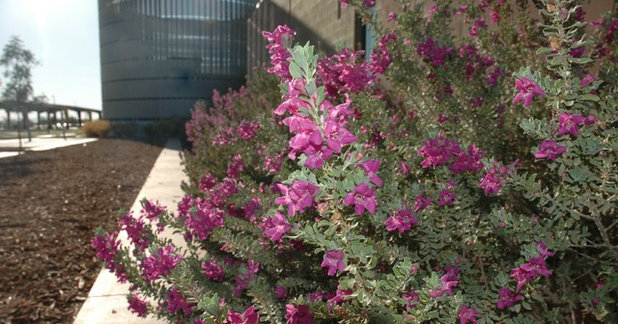
Noelle Johnson Landscape Consulting
How to use it. Texas ranger is a large shrub, so it needs a space at least 10 feet wide to be able to grow to its mature size. This shrub can be used throughout the landscape in a variety of ways. It makes a great informal hedge, which can be used to screen out an undesirable view or delineate property lines.
Because of its large size, Texas ranger looks best when used as a background or foundation plant. Plant
gaura (
Gaura lindheimeri), angelita daisy and/or
gold lantana (
Lantana ‘Gold Mound’) in front of it. It is also a great choice for screening out an ugly wall or fence. Avoid planting it in front of windows, because it will impair the view; use it to flank either side of the windows instead.
Plant it alongside other flowering beauties, such as bougainvillea and yellow bells. The magenta, yellow and purple flowers create a jewel-toned tapestry in the garden. For year-round color in the landscape, plant Texas ranger, which blooms in summer, along with Valentine bush, which flowers in winter and spring.
Shown: A row of flowering ‘Green Cloud’ Texas ranger shrubs growing along the base of a building
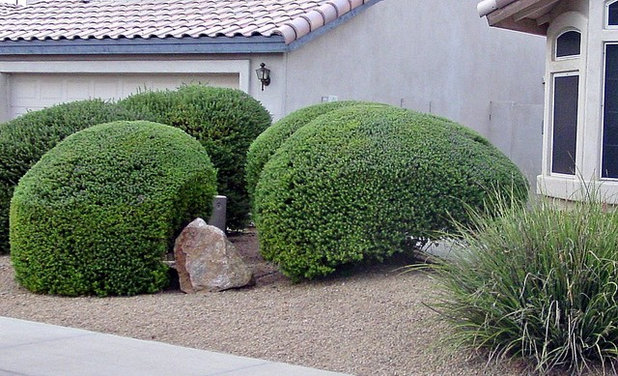
Noelle Johnson Landscape Consulting
Homeowners and landscapers often overprune these flowering shrubs. Repeated shearing of Texas ranger robs it of its beauty and turns it into a green blob. Pruning more than once or twice a year is not needed as long as you provide enough room for it to grow.
Shown: Overpruned Texas ranger shrubs
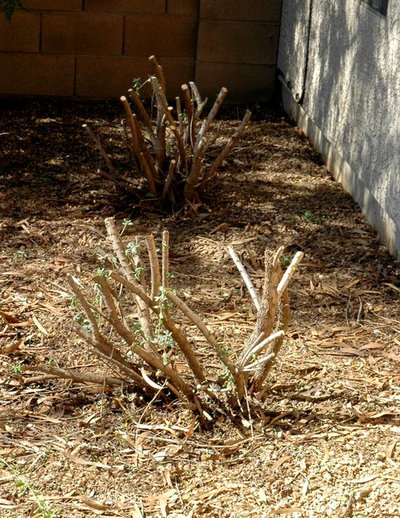
Noelle Johnson Landscape Consulting
If you have overgrown or oversheared your Texas ranger shrubs, the solution is quite simple: In spring, once the danger of frost has passed, prune back shrubs severely to 2 feet tall and wide. This type of severe pruning rejuvenates the shrubs by getting rid of old, unproductive growth and stimulating new growth. Although this stage is somewhat ugly, new growth will soon follow.
Severe pruning can be done every three years or so to keep shrubs healthy. In other years lightly prune back to one-third to one-half their size in spring if needed.
Shown: Severely pruned Texas ranger shrubs
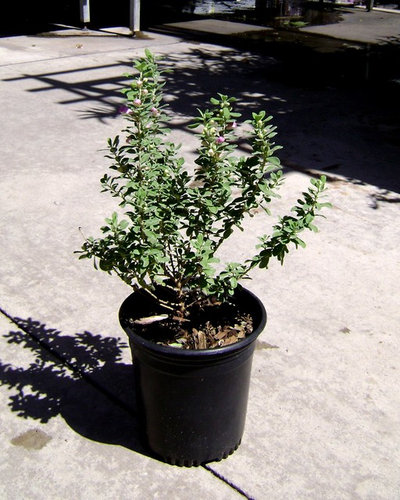
Noelle Johnson Landscape Consulting
Planting notes. Texas ranger plants are not fussy; their requirements are few. Give them full sun, well-drained soil, a spot at least 8 to 10 feet wide and periodic deep watering.
For best results make the planting hole three times as wide as the rootball, which will help it to establish more quickly.





